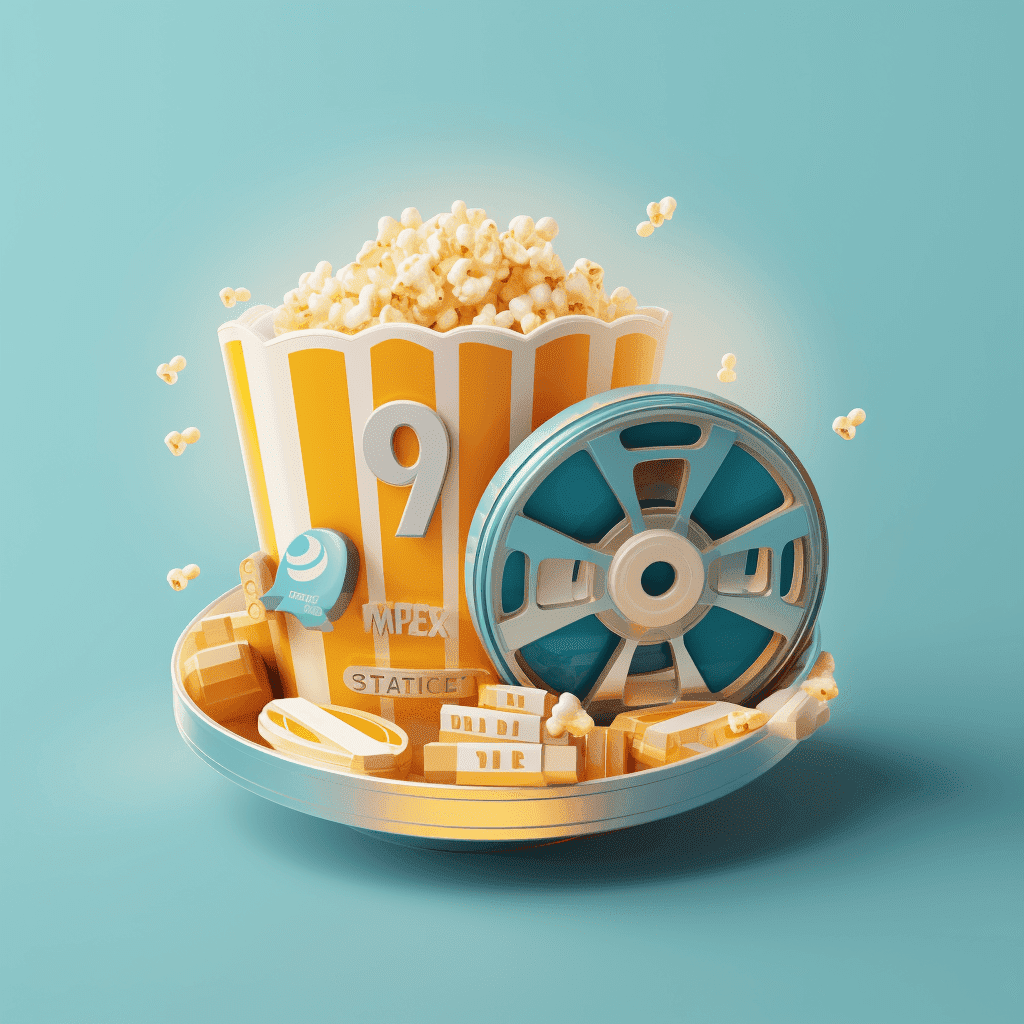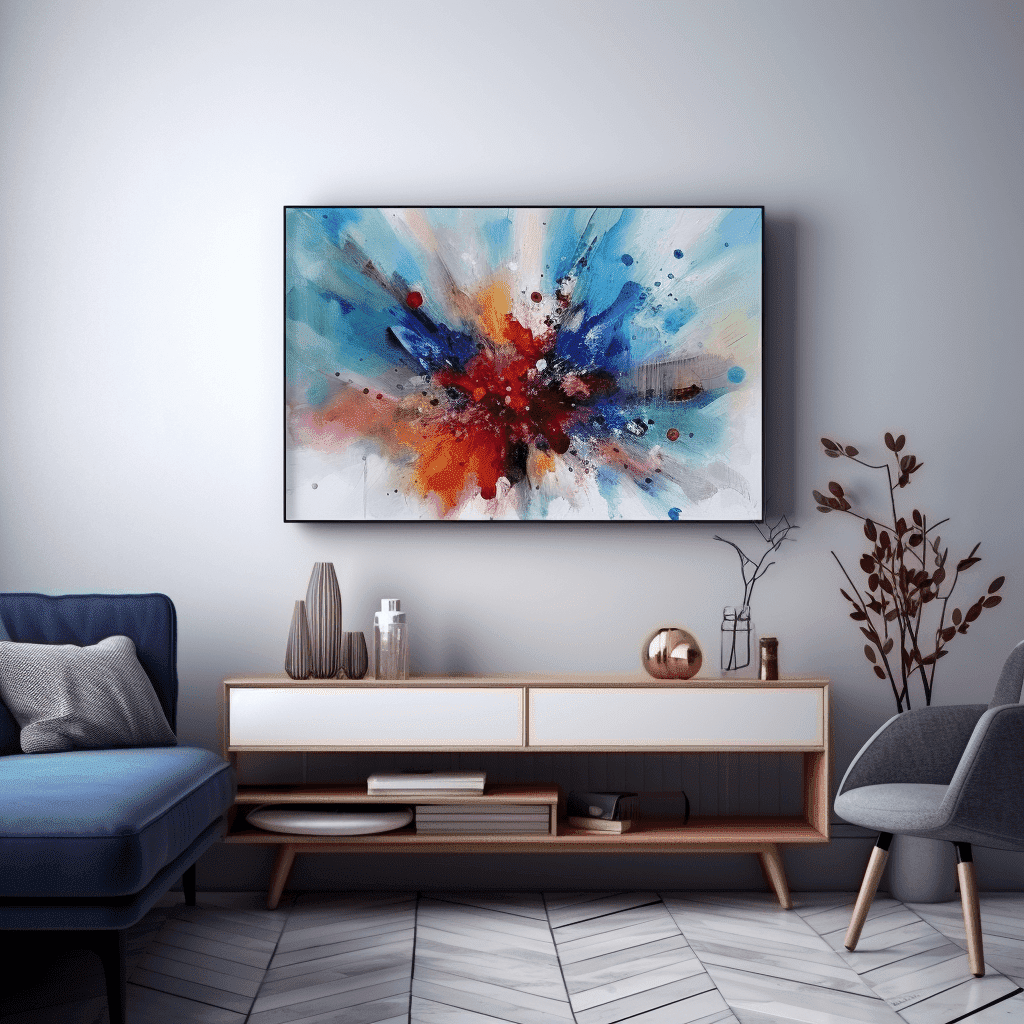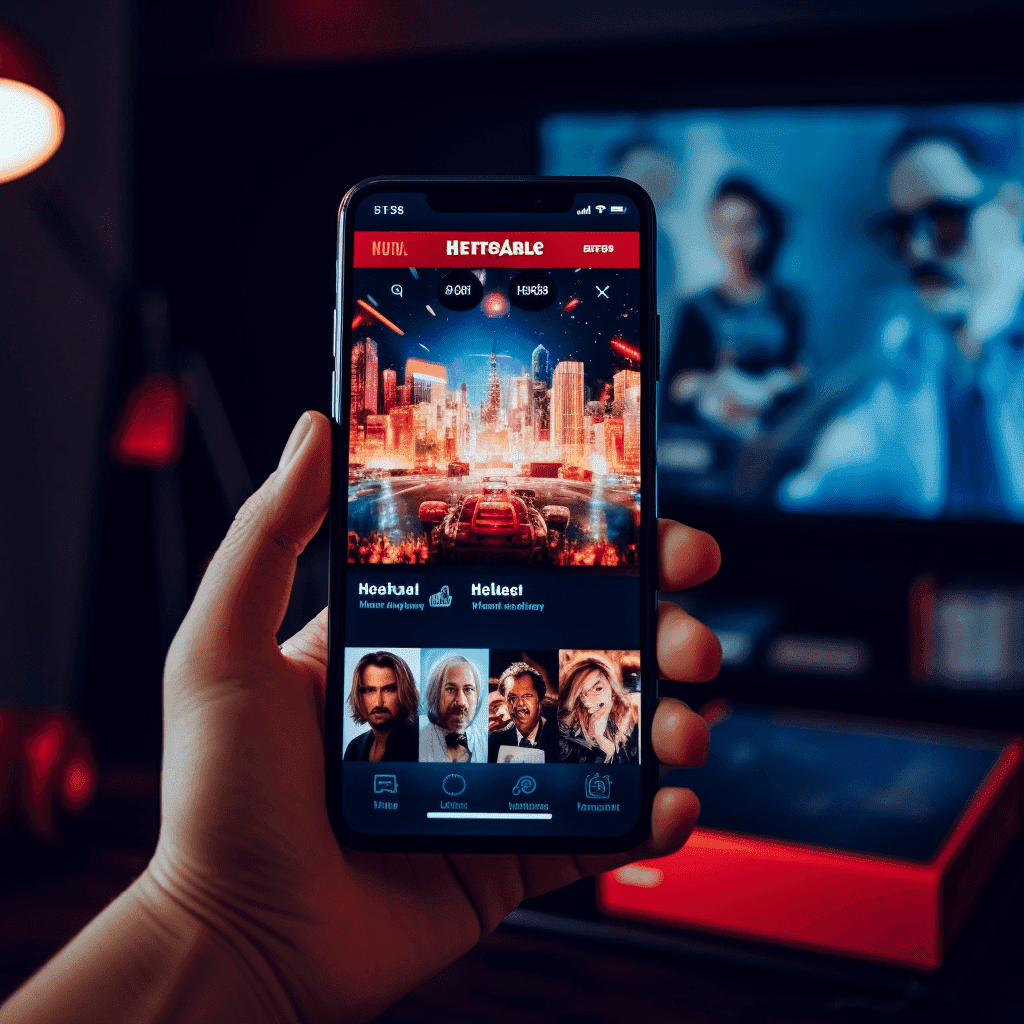Ad Blocker Detected
We use ads to keep this site running, so please consider disabling your ad blocker. Thank you!
Do not know how to disable ad blocker? Check out this article: How to disable ad blocker?
What's After the Blog?
History • Special Effects
The Magic of Movie Makeup: Transforming Actors into Characters
Explore the transformative power of movie makeup in our comprehensive blog post, delving into its history, techniques, and impact on storytelling in cinema.
January 06, 2024

Movies mentioned in this article
The Magic of Movie Makeup: Transforming Actors into Characters
Introduction
Makeup in movies is more than just a tool for enhancing an actor’s features; it’s a vital element that breathes life into characters and shapes the story. In the world of cinema, makeup artists are the unsung heroes who work tirelessly behind the scenes to create unforgettable characters that linger in our memories long after the credits roll. From the subtle art of aging an actor to the complex process of transforming them into a fantastical creature, the role of movie makeup is as diverse as it is crucial.
The importance of makeup in movies cannot be overstated. It’s an art form that combines creativity with technical skill to bring a director’s vision to life. It allows actors to fully immerse themselves in their roles, providing the physical transformation that complements their emotional portrayal. In films like The Lord of the Rings, where actors were transformed into elves, dwarves, and orcs, makeup was instrumental in creating a believable and immersive fantasy world. Similarly, in biopics like Darkest Hour, where Gary Oldman was transformed into Winston Churchill, makeup played a key role in lending authenticity to the character.
The History of Movie Makeup
The history of movie makeup is as old as cinema itself, tracing back to the silent film era when actors applied their own greasepaint to emphasize their features for black and white film. However, it was the advent of Technicolor that brought new challenges and innovations in makeup. The bright colors of Technicolor films required makeup artists to adapt their techniques to ensure actors looked natural on screen. Pioneers like Max Factor, who developed a new kind of makeup specifically for movie actors, revolutionized the industry.
In the golden age of Hollywood, makeup artists like Jack Pierce and Lon Chaney became legends for their groundbreaking work. Pierce, known for his work on Universal’s classic horror films, created iconic looks for characters like Frankenstein’s monster in Frankenstein and the Mummy in The Mummy. Lon Chaney, dubbed ‘The Man of a Thousand Faces’, transformed himself into unforgettable characters such as the Phantom in The Phantom of the Opera using innovative techniques and materials.
As movies evolved, so did the art of makeup. The 1960s and 1970s saw a surge in experimental makeup in films like Planet of the Apes, where actors were transformed into believable apes using prosthetics. This era also saw the rise of special makeup effects artists like Rick Baker, whose work in An American Werewolf in London set a new standard for transformational makeup.
The introduction of CGI in the late 20th and early 21st century brought new possibilities and challenges for makeup artists. Films like The Curious Case of Benjamin Button combined makeup with digital effects to age and de-age Brad Pitt’s character convincingly. However, traditional makeup still plays a critical role in modern filmmaking, as seen in movies like Guardians of the Galaxy, where elaborate makeup and prosthetics were used to create the film’s unique characters.
The history of movie makeup is a testament to the creativity and innovation of the artists behind the scenes. Their work has not only defined the look of iconic characters but has also pushed the boundaries of what is possible in cinema.
Stay tuned for the next sections where we dive deeper into the techniques, challenges, and celebrated achievements in the world of movie makeup. And remember, for more insights into your favorite movies, including descriptions, ratings, and details about end credit scenes, visit What’s After the Movie (ATM).## Techniques of the Trade
The world of movie makeup is vast and varied, encompassing a range of techniques each tailored to bring a specific vision to life. At the core of these techniques is an unyielding dedication to realism and creativity. Prosthetics are a key element, used to create three-dimensional enhancements like scars, wounds, or even entirely new facial structures. This technique was masterfully employed in movies like The Elephant Man, where John Hurt underwent a dramatic transformation. Character makeup is another significant technique, enabling actors to embody different ages, races, or even species. This was vividly demonstrated in Mrs. Doubtfire, where Robin Williams was transformed into an elderly woman.
Special effects makeup, often used in horror and fantasy films, pushes the boundaries of imagination. It involves creating out-of-this-world creatures and effects, as seen in Pan’s Labyrinth with its hauntingly beautiful and grotesque creatures. Body painting and airbrushing are also integral, used for creating intricate body art or for uniformly applying makeup, crucial in films like Avatar, where actors were turned into the Na’vi.
The recent surge in CGI has not diminished the importance of traditional makeup. Instead, it has created a synergy where both digital and practical effects complement each other. Films like Mad Max: Fury Road showcase this blend, where realistic makeup and CGI enhanced the dystopian world.
Question: “How do movie makeup artists use prosthetics?”
Prosthetic makeup involves creating sculpted pieces usually made of latex, silicone, or foam latex, which are then applied to the actor’s skin. These pieces are meticulously painted and blended to look as natural as possible. A classic example is the transformation of Heath Ledger into the Joker in The Dark Knight. Each prosthetic piece added to his face helped in creating the character’s disturbing appearance. The process is time-consuming and requires immense skill, as the artist must ensure that the prosthetics not only look realistic but also allow the actor to emote and move freely.
Case Studies: Iconic Transformations
Throughout cinema history, there have been numerous instances where movie makeup has not just complemented a performance but has become central to the character itself. Iconic transformations in film have the power to mesmerize audiences, leaving a lasting impression.
Gary Oldman’s transformation into Dracula in Bram Stoker’s Dracula is one such example. The makeup ranged from aging him centuries to turning him into a monstrous bat-like creature, showcasing the versatility and impact of makeup. Another remarkable transformation is seen in The Hours, where Nicole Kidman, as Virginia Woolf, wore a prosthetic nose that significantly altered her appearance, subtly influencing her performance.
Question: “What are some of the most impressive makeup transformations in movies?”
In answering this, we look at a few instances where makeup was pivotal. In The Iron Lady, Meryl Streep’s transformation into Margaret Thatcher showcased the power of aging makeup, while in Guardians of the Galaxy, Karen Gillan’s metamorphosis into Nebula was a striking use of prosthetics and body paint. Additionally, Doug Jones’ various roles, particularly in Guillermo del Toro’s films like Hellboy, exemplify the incredible potential of prosthetic makeup in transforming an actor into almost unrecognizable creatures.
These transformations are not just about changing an actor’s appearance; they are about bringing a character to life, making them memorable and unique. The meticulous work of makeup artists helps bridge the gap between the actor’s performance and the character’s final portrayal on screen, making movie makeup an indispensable part of cinematic storytelling.
In the following sections, we’ll explore the storytelling aspect of makeup and the challenges faced by makeup artists in the film industry. For more insights into the fascinating world of cinema, don’t forget to check out What’s After the Movie (ATM), where you can discover everything from movie summaries to the actors behind these iconic characters.## The Role of Makeup in Storytelling
The role of makeup in storytelling extends far beyond mere cosmetic enhancement; it’s a powerful narrative tool that helps define characters, set the tone, and even foreshadow plot developments. In the realm of filmmaking, makeup artists collaborate closely with directors and actors to ensure that each character’s appearance supports the story. Take, for instance, the Harry Potter series, where the makeup for characters like Voldemort and the Death Eaters not only made them visually distinct but also underscored their malevolence. In The Godfather, Marlon Brando’s makeup as Vito Corleone, with the iconic jowly cheeks, created an imposing figure that became symbolic of the character’s power and presence.
Makeup can also be used to depict a character’s journey or transformation over time. In The Curious Case of Benjamin Button, Brad Pitt’s character ages in reverse. The makeup played a crucial role in portraying this unusual aging process, visually narrating the character’s unique experience of life. Similarly, in Monster, Charlize Theron’s transformation into serial killer Aileen Wuornos was so complete that it not only altered her appearance but also seemed to reflect the character’s troubled psyche.
The psychological impact of makeup on actors and the audience is profound. For actors, transformative makeup can be a gateway into their character’s mind, aiding in embodying the role more fully. Audiences, on the other hand, may find themselves more deeply immersed in the story due to the believability and authenticity that effective makeup provides. This psychological immersion is evident in movies like Black Swan, where Natalie Portman’s gradual transformation into the Black Swan is visually and emotionally jarring, enhancing the film’s psychological thriller aspect.
Challenges and Achievements in Movie Makeup
Working in movie makeup presents a unique set of challenges and requires a blend of artistic skill and technical knowledge. One major challenge is ensuring longevity and consistency. Makeup has to withstand long shooting hours, varying temperatures, and intense lighting, all while maintaining its appearance on camera. Films with extensive outdoor scenes or physically demanding action sequences, like Mad Max: Fury Road, require makeup that can endure extreme conditions without needing constant touch-ups.
Another challenge is creating makeup effects that look realistic and convincing in high-definition formats. With the advent of 4K and even 8K resolutions, the level of detail captured on camera is higher than ever, leaving no room for error. Makeup artists must employ meticulous precision in their work, as seen in Blade Runner 2049, where the futuristic characters required a level of detail that was both intricate and believable.
Despite these challenges, the achievements in movie makeup have been groundbreaking. The Academy Awards have recognized the importance of makeup in filmmaking, with the Best Makeup and Hairstyling category celebrating the most outstanding work in the field. Iconic films like The Grand Budapest Hotel and Pan’s Labyrinth have received this prestigious award, highlighting the critical role of makeup in cinematic storytelling.
The achievements in movie makeup are not just technical but also artistic. Makeup artists are storytellers in their own right, using their skills to bring characters to life in a way that resonates with audiences worldwide. Their work is a testament to the power of visual storytelling and the endless possibilities of creativity in the world of cinema.
In the next section, we will conclude our exploration of the magic of movie makeup and its transformative impact on both actors and characters. Remember, for more insights into the art of filmmaking and to learn more about your favorite movies and actors, visit What’s After the Movie (ATM).## Innovations and Future Trends in Movie Makeup
As the film industry continues to evolve, so does the art of movie makeup, with new innovations shaping the future of how characters come to life on screen. Advances in materials and technology are at the forefront of these changes. Silicone-based prosthetics, for example, have revolutionized the field with their realistic texture and flexibility. They allow for more expressive and lifelike character designs, as seen in recent films like Guardians of the Galaxy Vol. 2, where the characters’ intricate facial expressions were crucial to their portrayal.
Digital technology is also playing an increasingly important role. While CGI can create stunning visual effects, it often works best in tandem with practical makeup. This blend of digital and practical effects creates a more tangible and relatable visual experience, as evidenced in Avengers: Endgame, where Thanos’ character combined Josh Brolin’s performance with sophisticated CGI, enhanced by practical makeup elements.
Sustainability is another growing trend in the industry. Eco-friendly and cruelty-free makeup products are becoming more prevalent, reflecting a broader shift towards environmentally responsible filmmaking. This change not only benefits the planet but also provides safer options for actors, particularly those with sensitive skin or allergies.
In terms of future trends, we can expect to see continued innovation in materials and techniques, along with a greater emphasis on diversity and inclusivity in character representation. Makeup will continue to play a critical role in bringing a wide range of characters to life, respecting and celebrating different cultures, identities, and stories in the process.
Conclusion
The magic of movie makeup is an integral part of cinematic storytelling, playing a crucial role in transforming actors into characters and bringing the director’s vision to life. From the early days of cinema to the modern digital age, makeup artists have continuously pushed the boundaries of creativity and technical skill. Their work not only enhances the visual impact of films but also deeply influences the emotional connection between the audience and the characters.
This exploration into the world of movie makeup reveals the artistry and dedication behind some of cinema’s most memorable characters. Whether it’s through subtle enhancements or dramatic transformations, makeup artists contribute immeasurably to the storytelling process, leaving an indelible mark on the film industry.
As we conclude our journey through the magic of movie makeup, we invite you to continue exploring the fascinating world of cinema. For more insights into your favorite movies, including behind-the-scenes details and comprehensive information about end credit scenes, visit What’s After the Movie (ATM). Dive into our vast movie database and discover the artistry that goes into creating the films you love.
Continue reading

What's After the Movie?
Not sure whether to stay after the credits? Find out!
Check out our other apps:
Actors
Companies
Latest Movies
© 2025 What's After the Movie. All rights reserved.





























